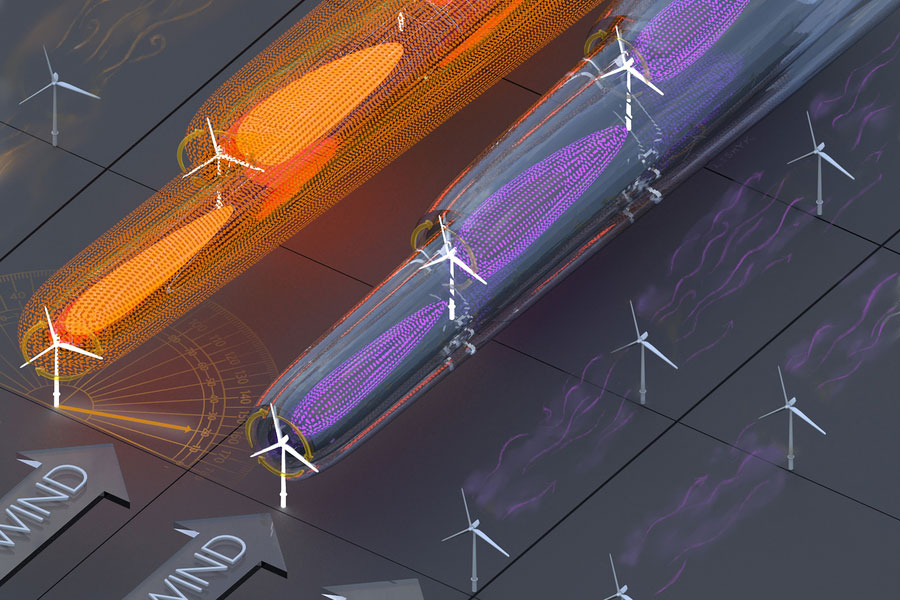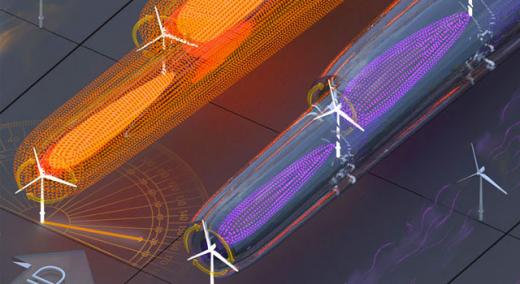Virtually all wind turbines, which produce more than 5 percent of the world’s electricity, are controlled as if they were individual, freestanding units. In fact, the vast majority are part of larger wind farm installations involving dozens or even hundreds of turbines whose wakes can affect each other.
|
ADVERTISEMENT |
Now, engineers at MIT and elsewhere have found that, with no need for any new investment in equipment, the energy output of such wind farm installations can be increased by modeling the wind flow of the entire collection of turbines and optimizing the control of individual units accordingly.

Illustration shows the concept of collective wind-farm flow control. Existing utility-scale wind turbines are operated to maximize only their own individual power production, generating turbulent wakes (shown in purple), which reduce the power production of downwind turbines. The new, collective wind-farm control system deflects wind turbine wakes to reduce this effect (shown in orange). This system increases power production in a three-turbine array in India by 32 percent. (Image: Victor Leshyk)
…

Add new comment